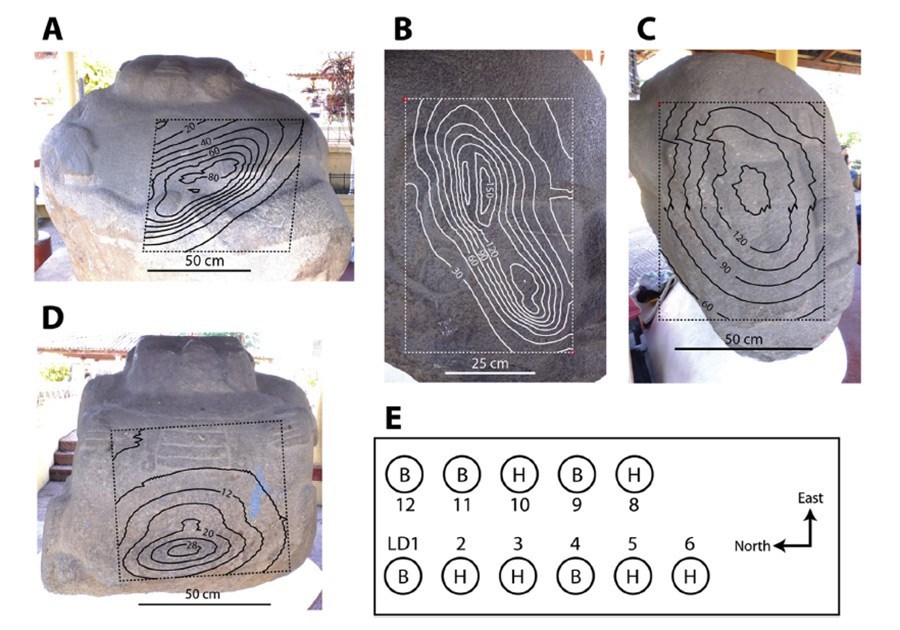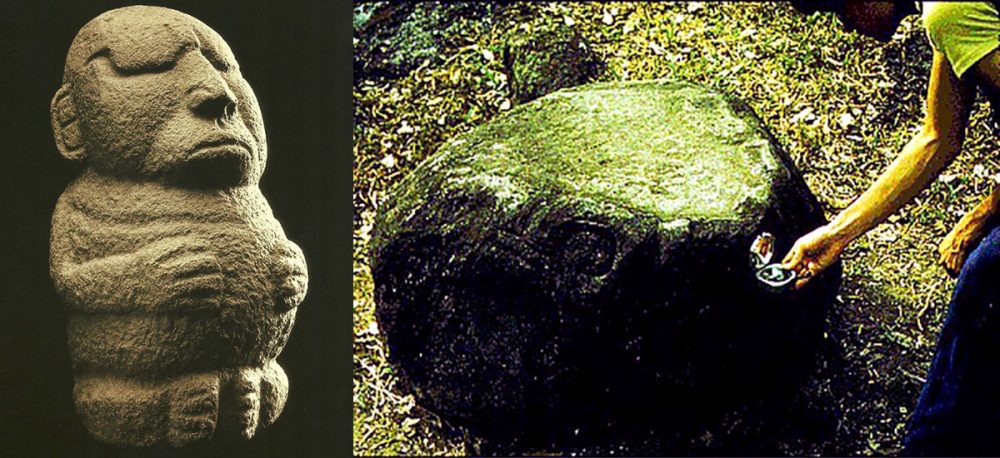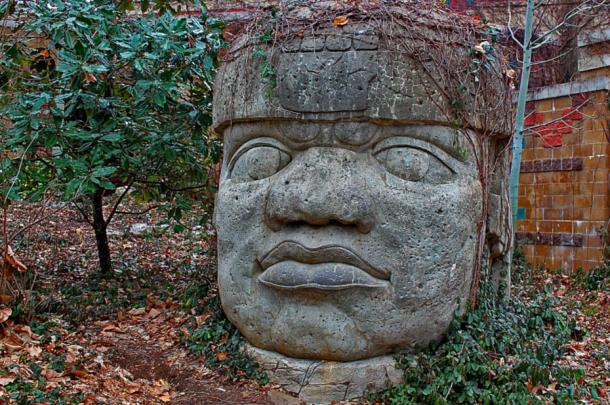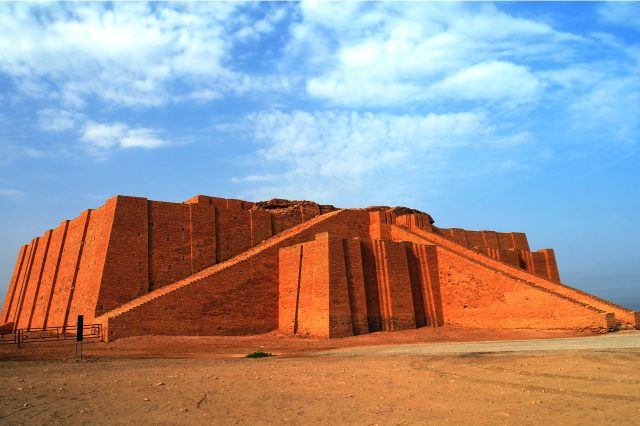Knowledge of magnetism in ancient Mesoamerica was more widespread than previously thought. A group of scientists mapped the magnetic properties of eleven Olmec statues and found that certain body parts, like the navel, the forehead and the cheeks of the human figures, seem to display magnetic anomalies. The researchers concluded these magnetized spots were not randomly distributed and were deliberately induced by the ancients.
The earliest description of magnetism was made by the Greek philosopher Thales of Miletus in the 6th century BC.
However, circumstantial evidence suggests that an ancient Mesoamerican civilization knew about it much earlier and even made practical use, making magnetism part of their constructions centuries before the Greeks introduced it to the world.
The phenomenon of magnetism has been known by mankind for more than three thousand years.
This fact is documented in references to the naturally occurring magnetic mineral magnetite in clay tablets in ancient Mesopotamia, as early as the second millennium BC.
Less known, however, is the possible evidence for the knowledge of the magnetic properties of rocks by the peoples of pre-Columbian America.
In fact, archaeologists have found in Olmec sites in Mexico many objects made of iron ore that may reveal an early acquaintance with magnetism.
The Olmecs constituted the first complex culture that appeared in the Americas, before 1000 BC, on Mexico’s east coast.
Among these objects, a polished bar has been found that is magnetic, dating from 1400-1000 BC, which had led to speculations that it may have been part of a magnetic compass, one thousand years before the first Chinese compasses were made.
In ancient Greece, Aristotle attributed the first of what could be called a scientific discussion of magnetism to the philosopher Thales of Miletus, who lived from about 625 BC to about 545 BC.

Hunting down the history of Magnetism in America
Experts studying the Olmecs have discovered magnetic anomalies present in the snout of an animal sculpture in Izapa. Interestingly, the statue’s magnetic properties seem to have been induced deliberately during its manufacture thousands of years ago.
Researchers have also spotted strong magnetism on the surface of a large group of sculptures known as “cabezones–Head Statues” and “barrigones –Potbelly” statues. But the idea that magnetism was used by the ancients, specifically in central Mexico, is not something entirely new.
In fact, this was described by Malmström in 1997. The fascination of the use of magnetism in statues has caught the attention of a number of scholars who have studied this peculiar characteristic over the years. A lot of experts were drawn to the statues of Monte Alto that apparently have magnetic anomalies in specific parts of the sculpture’s bodies.
Evidence of Olmec Magnetism
One piece of evidence that the Olmecs knew of the properties of magnetic ores was a discovery made in Izapa, in a site corresponding to the Late Formative period (300 BC-AD 100), of a carved stone turtlehead of 1.1 × 1.2 meters that is magnetic, with one of the magnetic poles coincident with the snout of the animal.
In the coastal plain of Guatemala, it was found a statue of a jaguar with magnetic poles in each raised paw and a crude statue of two seated men made of a single block of stone, with magnetic poles on either side of the navel.
One of the most interesting Olmec objects, found in strata dated 1400-1000 BC, is a fragment of a polished bar 3.5 cm long that is magnetic, with a magnetic moment almost parallel to its longer dimension.
The magnetic bar has a visible groove cut roughly parallel to its length, which could have been employed for sighting. Analysis of its composition using Mossbauer spectroscopy, established that it consists of almost pure hematite.
Olmec Magnetism: What research revealed
Previous studies performed on the statues were, to say the least, limited. This changed when Harvard, Yale, and MIT researchers examined the sculptures with more professional and accurate tools.
Their results, described in an article published in the Journal of Archaeological Science, are amazing and history-changing.
The researchers detail how significant magnetic anomalies were discovered in two particular regions of the sculptures, in the navel in the ‘Potbelly statues’ and in ‘the right temple forward of the ear’ of the Head statues, aka ‘Cabezones.’ The scientists argue that this is no coincidence and that these magnetic features were intentionally incorporated by the ancients who built the statues thousands of years ago.
“We confirm the observations of Malmström (1997) that all three colossal heads that have significant anomalies exhibit the strongest signals over the right temple and cheek areas. Similarly, we find that all four magnetized full-body sculptures have a strong signal overlapping the navel. [Statistical analysis shows that] for both types of sculptures, the consistent colocation of…anomalies with specific anatomical features is inconsistent with a random distribution at the P < 0.01 level,” wrote researchers in their paper titled ‘Knowledge of Magnetism in Ancient Mesoamerica: Precision measurements of the potbelly sculptures from Monte Alto, Guatemala.’

Further analysis revealed that the magnetism present on the statutes might have been caused by “a lightning-induced electrical current across the rock surface,” a feature that may well predate the manufacture of the sculptures.
In other words, the researchers suggest, through the new study, that the builders did not randomly distribute the magnetized spots on the statues, and it’s nearly certain that they were intentionally carved to make use of their magnetic properties.
Using and detecting anomalous magnetic fields
The researchers have revealed how the “apparently intentional colocation of carved anatomical features and pre-existing magnetized regions” indicates that the sculptors of the ancient statues were well aware of magnetism and knew precisely how to incorporate it in their constructions. Furthermore, they also possessed methods and tools that allowed them to detect and identify the presence of ‘anomalous magnetic fields.’
When scientists measured the magnetic field on the sculptures, they discovered how the anomalous areas were “sufficient to visibly deflect a magnetic compass needle suspended within up to ∼10 cm of the surface.”
All of the above has led researchers to conclude that the Olmecs possessed extensive knowledge about magnetism and developed and created tools that allowed them to make use of anomalous magnetic fields.
“A small number of known Mesoamerican artifacts can plausibly be used as magnetic compasses to detect the magnetic anomalies on the Monte Alto sculptures, although they have not been reported at the site. Nevertheless, their presence at earlier sites elsewhere in Mesoamerica opens the possibility that the Late Pre-classic inhabitants of the Pacific coast were aware of the properties of lodestones,” explained researchers in the study.
“Most intriguingly, the hematite-rich bar from San Lorenzo was able to align to Earth’s magnetic fields with <1° precision. Such a device would have readily indicated the locations and morphologies of magnetized regions on the sculptures if it had been available to the ancient Monte Alto sculptor,” researchers concluded.
The new discoveries and measurements of magnetic anomalies on some of the Olmec statues clearly provide “robust evidence that knowledge of magnetism existed in the Americas by the second half of the first millennium BCE,” concluded the researchers.
Click here to read and download a study titled “Mexico and the early history of magnetism.”
Join the discussion and participate in awesome giveaways in our mobile Telegram group. Join Curiosmos on Telegram Today. t.me/Curiosmos





